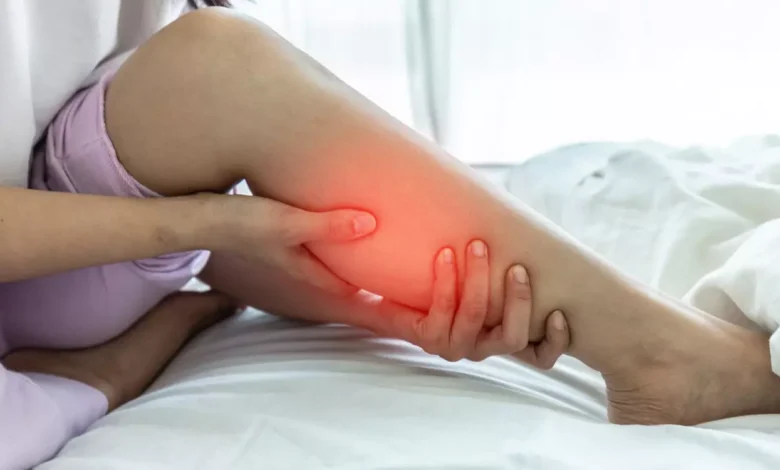Leg Pain Treatment: Effective Solutions for Relief and Recovery

Leg pain is a common issue that can arise from various causes, ranging from minor muscle strains to serious medical conditions. It can affect your mobility, disrupt your daily activities, and significantly impact your quality of life. Understanding the causes, treatment options, and preventive measures for leg pain is essential for effective management. This article provides a detailed guide to leg pain treatment, offering insights into how to address discomfort and promote long-term leg health.
Understanding the Causes of Leg Pain
Leg pain can stem from a variety of factors, including injuries, medical conditions, and lifestyle habits. Identifying the root cause is the first step toward effective leg pain treatment. Here are some common causes:
1. Muscle Cramps and Strains
Overuse, dehydration, or sudden movements can lead to muscle cramps or strains, causing sharp, sudden pain. This is often temporary but can be quite uncomfortable.
2. Injuries
Sprains, fractures, or tendon injuries are common causes of acute leg pain. These injuries often result from accidents, sports activities, or improper movement.
3. Peripheral Artery Disease (PAD)
PAD occurs when narrowed arteries reduce blood flow to the legs, causing pain, especially during physical activity. This condition requires medical attention for proper leg pain treatment in Houston.
4. Sciatica
Sciatica is caused by compression or irritation of the sciatic nerve, leading to pain that radiates from the lower back down the leg. It often requires targeted therapies for relief.
5. Arthritis
Inflammation in the joints, such as the knees or hips, can cause persistent leg pain. Arthritis-related pain often worsens with age or activity.
6. Varicose Veins
Swollen or damaged veins can lead to aching, heaviness, or discomfort in the legs. This condition is more common in individuals who stand or sit for long periods. Specialized clinics like Metro Vein Centers ( www.metroveincenters.com/ ) provide comprehensive care options for those experiencing vein-related leg pain.
7. Nerve Damage (Neuropathy)
Conditions like diabetes can cause nerve damage, leading to tingling, burning, or shooting pain in the legs. Neuropathy requires specialized leg pain treatment to manage symptoms.
8. Deep Vein Thrombosis (DVT)
DVT is a serious condition where a blood clot forms in a deep vein, often causing swelling, redness, and severe pain. Immediate medical attention is necessary.
Effective Leg Pain Treatment Options
The approach to leg pain treatment depends on the underlying cause and severity of the pain. Below are some of the most effective treatment options:
1. Home Remedies
For mild leg pain, home remedies can provide significant relief. These include:
- Rest: Avoid activities that exacerbate the pain and allow your legs to recover.
- Ice and Heat Therapy: Apply ice packs to reduce swelling and heat pads to relax muscles.
- Elevation: Elevate your legs to improve blood flow and reduce swelling.
- Compression: Use compression bandages or stockings to support circulation and alleviate discomfort.
2. Medications
Medications can help manage pain and inflammation. Common options include:
- Over-the-Counter Pain Relievers: Non-prescription medications like ibuprofen or acetaminophen can reduce pain and inflammation.
- Prescription Medications: For severe pain or specific conditions like neuropathy, stronger painkillers or anti-inflammatory drugs may be prescribed.
3. Physical Therapy
Physical therapy is a highly effective leg pain treatment for conditions like sciatica, arthritis, or muscle injuries. A physical therapist can design a personalized exercise program to:
- Strengthen muscles
- Improve flexibility
- Enhance mobility
- Reduce pain
4. Medical Procedures
In some cases, medical interventions are necessary for effective leg pain treatment. These may include:
- Injections: Corticosteroid injections can reduce inflammation in conditions like arthritis.
- Surgery: Severe injuries, varicose veins, or blood clots may require surgical intervention.
5. Alternative Therapies
Alternative therapies can complement traditional treatments and provide additional relief. These include:
- Massage Therapy: Helps relax muscles and improve circulation.
- Acupuncture: May alleviate nerve-related leg pain.
- Yoga and Stretching: Improves flexibility and reduces muscle tension.
When to Seek Medical Attention
While mild leg pain can often be managed at home, certain symptoms require prompt medical attention. Seek professional help if you experience:
- Severe or persistent pain
- Swelling, redness, or warmth in the leg
- Difficulty walking or bearing weight
- Signs of infection, such as fever or pus
- Symptoms of DVT, like sudden swelling or pain
Early diagnosis and treatment can prevent complications and ensure a faster recovery.
Preventing Leg Pain
Prevention is a crucial aspect of leg pain treatment. By adopting healthy habits and making lifestyle changes, you can reduce the risk of developing leg pain. Here are some preventive measures:
1. Stay Active
Regular exercise strengthens muscles, improves circulation, and reduces the risk of injuries. Low-impact activities like walking, swimming, or cycling are ideal for leg health.
2. Wear Proper Footwear
Supportive shoes can reduce strain on your legs and prevent pain caused by poor posture or alignment.
3. Maintain a Healthy Weight
Excess weight puts additional pressure on your legs, increasing the risk of pain and joint problems.
4. Stay Hydrated
Dehydration can lead to muscle cramps, so ensure you drink enough water throughout the day.
5. Stretch Regularly
Stretching before and after exercise prevents muscle tightness and reduces the risk of injuries.
6. Avoid Prolonged Sitting or Standing
Take breaks to move around and stretch if your job requires long periods of sitting or standing.
Conclusion
Leg pain is a common but manageable condition that can arise from various causes. By understanding the underlying factors and exploring effective leg pain treatment options, you can alleviate discomfort and improve your quality of life. Whether through home remedies, medical interventions, or preventive measures, taking proactive steps can help you maintain healthy, pain-free legs. If your symptoms persist or worsen, consult a healthcare professional for a thorough evaluation and personalized treatment plan. Remember, early intervention is key to preventing complications and ensuring a speedy recovery.



![Find_the_Right_Mental_Health_Billing_Company_in_Illinois[1]](https://blogbuz.co.uk/wp-content/uploads/2025/06/Find_the_Right_Mental_Health_Billing_Company_in_Illinois1-390x220.webp)
